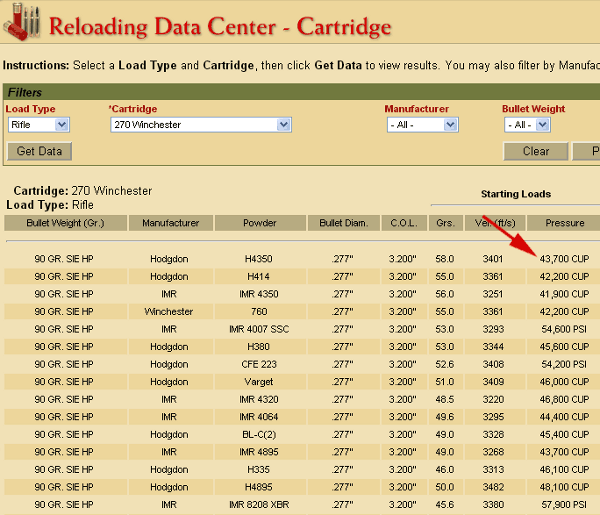![shipping gun parts UPS FEDEX]() Gun guys are always shipping stuff around the country — whether it’s a barrel to be chambered, or a scope that needs to go back for warranty repair. Or maybe you’ve sold some bullets or reloading dies you no longer need. To ensure your precious packages get to their destination in one piece, it’s important to take precautions when boxing up your items. And by all means insure packages for full value — even if your packaging is perfect, there is always the possibility that your shipment might be lost altogether. Sadly, that can happen, no matter which carrier you choose: Fedex, UPS, or the U.S. Postal Service (USPS). Here are some tips for shipping gun stuff — we explain how to pack items properly and how to minimize the risk of loss.
Gun guys are always shipping stuff around the country — whether it’s a barrel to be chambered, or a scope that needs to go back for warranty repair. Or maybe you’ve sold some bullets or reloading dies you no longer need. To ensure your precious packages get to their destination in one piece, it’s important to take precautions when boxing up your items. And by all means insure packages for full value — even if your packaging is perfect, there is always the possibility that your shipment might be lost altogether. Sadly, that can happen, no matter which carrier you choose: Fedex, UPS, or the U.S. Postal Service (USPS). Here are some tips for shipping gun stuff — we explain how to pack items properly and how to minimize the risk of loss.
Tips for Shippers
Dennis Haffner from McGowen Precision Barrels offers some advice on how to avoid damage when shipping gun parts or other valuable or heavy items. Dennis explains:
![shipping gun parts UPS FEDEX]() “First, I started double-packing the contents and in many cases double-boxing. I spend a fortune on heavy-reinforced shipping tape. If the contents are loosely packed, the package is going to get crushed. On real important items or delicate items, wrap the content in plastic and spray the inside void areas with non-expanding foam. They make shipping foam just for this. This method really works. Since I started paying more attention to packaging, I have just about wiped out my issues with all three companies (Fedex, UPS, USPS). Yes, I hate doing it, but in the long run for us, it’s cheaper.
“First, I started double-packing the contents and in many cases double-boxing. I spend a fortune on heavy-reinforced shipping tape. If the contents are loosely packed, the package is going to get crushed. On real important items or delicate items, wrap the content in plastic and spray the inside void areas with non-expanding foam. They make shipping foam just for this. This method really works. Since I started paying more attention to packaging, I have just about wiped out my issues with all three companies (Fedex, UPS, USPS). Yes, I hate doing it, but in the long run for us, it’s cheaper.
Bullet shipments are the worst — a shipment of 500+ bullets can destroy a cardboard box. I have ordered bullets from individuals who put them in baggies and filled the remainder of the box with foam peanuts. That is not going to work. Any piece of metal, including a die, will puncture a cardboard box, or destroy a padded envelope. Just look at the tracking information and imagine your package bouncing around in the back of the shipping truck, probably under many other packages. My advice is to NEVER use padded envelopes. Barrel nuts or recoil lugs will most likely never make it.
ORM-D items are required to be shipped in heavily-reinforced, double-walled containers. The packages still get a little damage, but the contents usually survive.
![shipping gun parts UPS FEDEX]() How do shipments get damaged? Consider this — one of the shipping companies this year flipped (overturned) one of our new CNC machines (which rendered it useless). Maybe your small packages were in the same delivery truck as my CNC machine. I wonder how many little boxes were crushed underneath it.
How do shipments get damaged? Consider this — one of the shipping companies this year flipped (overturned) one of our new CNC machines (which rendered it useless). Maybe your small packages were in the same delivery truck as my CNC machine. I wonder how many little boxes were crushed underneath it.
As for USPS flat rate boxes — you would not believe what people try to stuff in these boxes. USPS finally put a weight limit on the boxes — they had to. I sometimes take my delicate items packed in an envelope or small box. I spray foam in a larger flat rate box and insert the smaller package, then fill the remainder of the void with foam. It works, and part usually arrives undamaged.”
![shipping gun parts UPS FEDEX]()
Shipping Rifle Barrels (PVC Tube and Tennis Ball Method)
A new match-grade barrel can cost $350 or more, and it might take six months (or more) to replace it, given the current wait time with top barrel-makers. So, you don’t want your nice new tube to get damaged in transit. Forum Member Chuck L. (aka “M-61″) offers these tips for shipping rifle barrels:
![shipping gun parts UPS FEDEX]() “Packing a barrel can be a problem. Here’s a shipping method that won’t stop lost shipments but so far has stopped damage. Get a PVC pipe (of size appropriate to your barrel) with fitted caps for each end. Attach a cap to one end. Tape the barrel threads and tape over the muzzle. Then drop one standard tennis ball into the pipe. Place barrel in pipe. Next add whatever peanuts or foam you can jam in to support the barrel on the sides. Then place a second tennis ball into the opposite end of the PVC pipe. (So now you have a tennis ball on either end of your barrel.) With everything secure inside, attach the upper cap and tape it down securely. With this packing procedure, when the carrier launches the pipe like a javelin, at least the barrel will not come through like a spear and be gone. Label the pipe with very large address labels so no one suspects it’s just garbage laying around. This procedure may seem ridiculous but it has worked for me. Oh and definitely get insurance. If your item is insured, the shippers will look harder to find it.”
“Packing a barrel can be a problem. Here’s a shipping method that won’t stop lost shipments but so far has stopped damage. Get a PVC pipe (of size appropriate to your barrel) with fitted caps for each end. Attach a cap to one end. Tape the barrel threads and tape over the muzzle. Then drop one standard tennis ball into the pipe. Place barrel in pipe. Next add whatever peanuts or foam you can jam in to support the barrel on the sides. Then place a second tennis ball into the opposite end of the PVC pipe. (So now you have a tennis ball on either end of your barrel.) With everything secure inside, attach the upper cap and tape it down securely. With this packing procedure, when the carrier launches the pipe like a javelin, at least the barrel will not come through like a spear and be gone. Label the pipe with very large address labels so no one suspects it’s just garbage laying around. This procedure may seem ridiculous but it has worked for me. Oh and definitely get insurance. If your item is insured, the shippers will look harder to find it.”
Editor’s Note: Fedex also makes a triangular-profile cardboard shipping box. This 38″ x 6″ x 6″ x 6″ Fedex Tube (designed for blueprints and posters) is free for the asking. For most barrels, there should be enough clearance to hold your PVC tube (with barrel packed inside tube). However, don’t ship the barrel inside the cardboard box by itself. Cap and pad the ends and bubble wrap it heavily, or better yet, use the PVC tube method described above, with the PVC tube inside the box.
For More Packing and Shipping Advice, Read this Forum Thread.
 On the Applied Ballistics Facebook page, Ballistician Bryan Litz regularly offers a “Tuesday Trivia” question about ballistics. Today’s brain-teaser is a true/false question about bullet stabilization. On shooting forums you often find heated arguments about “over-stabilization”. Bryan wants readers to consider the issue of over-stabilization and answer a challenge question…
On the Applied Ballistics Facebook page, Ballistician Bryan Litz regularly offers a “Tuesday Trivia” question about ballistics. Today’s brain-teaser is a true/false question about bullet stabilization. On shooting forums you often find heated arguments about “over-stabilization”. Bryan wants readers to consider the issue of over-stabilization and answer a challenge question…
 Need rifle primers? Well
Need rifle primers? Well 
 Kestrel 4500 Shooter’s Weather Meters with integrated Applied Ballistics software are finally shipping. Bryan Litz, founder of
Kestrel 4500 Shooter’s Weather Meters with integrated Applied Ballistics software are finally shipping. Bryan Litz, founder of 
 Gun guys are always shipping stuff around the country — whether it’s a barrel to be chambered, or a scope that needs to go back for warranty repair. Or maybe you’ve sold some bullets or reloading dies you no longer need. To ensure your precious packages get to their destination in one piece, it’s important to take precautions when boxing up your items. And by all means insure packages for full value — even if your packaging is perfect, there is always the possibility that your shipment might be lost altogether. Sadly, that can happen, no matter which carrier you choose: Fedex, UPS, or the U.S. Postal Service (USPS). Here are some tips for shipping gun stuff — we explain how to pack items properly and how to minimize the risk of loss.
Gun guys are always shipping stuff around the country — whether it’s a barrel to be chambered, or a scope that needs to go back for warranty repair. Or maybe you’ve sold some bullets or reloading dies you no longer need. To ensure your precious packages get to their destination in one piece, it’s important to take precautions when boxing up your items. And by all means insure packages for full value — even if your packaging is perfect, there is always the possibility that your shipment might be lost altogether. Sadly, that can happen, no matter which carrier you choose: Fedex, UPS, or the U.S. Postal Service (USPS). Here are some tips for shipping gun stuff — we explain how to pack items properly and how to minimize the risk of loss. “First, I started double-packing the contents and in many cases double-boxing. I spend a fortune on heavy-reinforced shipping tape. If the contents are loosely packed, the package is going to get crushed. On real important items or delicate items, wrap the content in plastic and spray the inside void areas with non-expanding foam. They make shipping foam just for this. This method really works. Since I started paying more attention to packaging, I have just about wiped out my issues with all three companies (Fedex, UPS, USPS). Yes, I hate doing it, but in the long run for us, it’s cheaper.
“First, I started double-packing the contents and in many cases double-boxing. I spend a fortune on heavy-reinforced shipping tape. If the contents are loosely packed, the package is going to get crushed. On real important items or delicate items, wrap the content in plastic and spray the inside void areas with non-expanding foam. They make shipping foam just for this. This method really works. Since I started paying more attention to packaging, I have just about wiped out my issues with all three companies (Fedex, UPS, USPS). Yes, I hate doing it, but in the long run for us, it’s cheaper. How do shipments get damaged? Consider this — one of the shipping companies this year flipped (overturned) one of our new CNC machines (which rendered it useless). Maybe your small packages were in the same delivery truck as my CNC machine. I wonder how many little boxes were crushed underneath it.
How do shipments get damaged? Consider this — one of the shipping companies this year flipped (overturned) one of our new CNC machines (which rendered it useless). Maybe your small packages were in the same delivery truck as my CNC machine. I wonder how many little boxes were crushed underneath it.
 “Packing a barrel can be a problem. Here’s a shipping method that won’t stop lost shipments but so far has stopped damage. Get a PVC pipe (of size appropriate to your barrel) with fitted caps for each end. Attach a cap to one end. Tape the barrel threads and tape over the muzzle. Then drop one standard tennis ball into the pipe. Place barrel in pipe. Next add whatever peanuts or foam you can jam in to support the barrel on the sides. Then place a second tennis ball into the opposite end of the PVC pipe. (So now you have a tennis ball on either end of your barrel.) With everything secure inside, attach the upper cap and tape it down securely. With this packing procedure, when the carrier launches the pipe like a javelin, at least the barrel will not come through like a spear and be gone. Label the pipe with very large address labels so no one suspects it’s just garbage laying around. This procedure may seem ridiculous but it has worked for me. Oh and definitely get insurance. If your item is insured, the shippers will look harder to find it.”
“Packing a barrel can be a problem. Here’s a shipping method that won’t stop lost shipments but so far has stopped damage. Get a PVC pipe (of size appropriate to your barrel) with fitted caps for each end. Attach a cap to one end. Tape the barrel threads and tape over the muzzle. Then drop one standard tennis ball into the pipe. Place barrel in pipe. Next add whatever peanuts or foam you can jam in to support the barrel on the sides. Then place a second tennis ball into the opposite end of the PVC pipe. (So now you have a tennis ball on either end of your barrel.) With everything secure inside, attach the upper cap and tape it down securely. With this packing procedure, when the carrier launches the pipe like a javelin, at least the barrel will not come through like a spear and be gone. Label the pipe with very large address labels so no one suspects it’s just garbage laying around. This procedure may seem ridiculous but it has worked for me. Oh and definitely get insurance. If your item is insured, the shippers will look harder to find it.”

 Have a good look at the photos below — this may be one of the most noteworthy target strings we’ve ever published. What you can see is the effect of barrel tuner position on point of impact (POI). You can clearly see that the tuner position alters the up/down POI location in a predictable fashion.
Have a good look at the photos below — this may be one of the most noteworthy target strings we’ve ever published. What you can see is the effect of barrel tuner position on point of impact (POI). You can clearly see that the tuner position alters the up/down POI location in a predictable fashion. 




 Joel Pendergraft makes a great tool holder for the K&M that does away with the pain as it gives a much larger and more comfortable gripping surface. The tool holder is made from aluminum, nicely machined and knurled for a good grip. I thought it was well worth the price of $48.00 delivered in the USA (Price may have gone up since this story was written). Switching the tool holder from one K&M turner to another is a matter of loosening the set screw on the side, slipping out one turner, inserting the other and re-tightening. The Pendergraft tool-holder is simple, well-made, fairly priced and a real joy to use. Who could ask for more?
Joel Pendergraft makes a great tool holder for the K&M that does away with the pain as it gives a much larger and more comfortable gripping surface. The tool holder is made from aluminum, nicely machined and knurled for a good grip. I thought it was well worth the price of $48.00 delivered in the USA (Price may have gone up since this story was written). Switching the tool holder from one K&M turner to another is a matter of loosening the set screw on the side, slipping out one turner, inserting the other and re-tightening. The Pendergraft tool-holder is simple, well-made, fairly priced and a real joy to use. Who could ask for more? Precision shooters favor premium brass from
Precision shooters favor premium brass from 







 If you want a good chuckle, watch this video. Hornady, with corporate tongue placed firmly in cheek, has created a light-hearted video response to concerns about production cutbacks/changes. Here you see Steve Hornady (President) and Jason Hornady (Vice President) in a very funny intro, after which Steve delivers a serious message assuring customers that Hornady’s factories are working full tilt, seven days a week. Do watch this very amusing video. We expect it will both raise your spirits and calm your concerns. Well played, Hornady….
If you want a good chuckle, watch this video. Hornady, with corporate tongue placed firmly in cheek, has created a light-hearted video response to concerns about production cutbacks/changes. Here you see Steve Hornady (President) and Jason Hornady (Vice President) in a very funny intro, after which Steve delivers a serious message assuring customers that Hornady’s factories are working full tilt, seven days a week. Do watch this very amusing video. We expect it will both raise your spirits and calm your concerns. Well played, Hornady….
 Eurenco, current owner of the Vihtavuori Oy powder manufacturing facility in Finland, has been seeking a new owner for the facility for many months. Well it looks like there is a buyer,
Eurenco, current owner of the Vihtavuori Oy powder manufacturing facility in Finland, has been seeking a new owner for the facility for many months. Well it looks like there is a buyer, 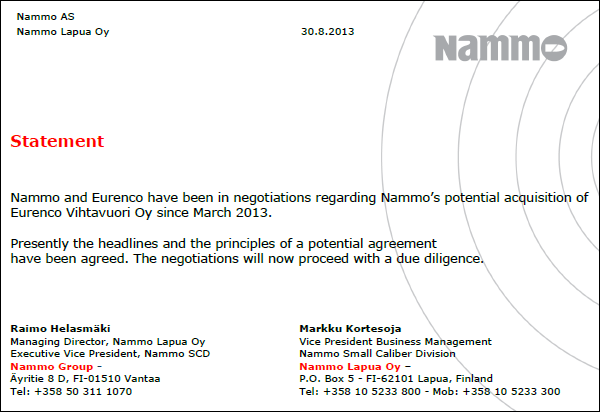
 A lead-free “utopia” where bullets are banned and hunting is, for all practical purposes, eliminated — that’s apparently what some legislators want California to become. California Assembly Bill AB 711 would completely ban the use of traditional lead ammunition for hunting anywhere in the state. What’s more, many legislators acknowledge that this ban could, in the near future, be applied to all shooting sports in the Golden State. If you can’t buy bullets, you can’t shoot — and that seems to be the real agenda.
A lead-free “utopia” where bullets are banned and hunting is, for all practical purposes, eliminated — that’s apparently what some legislators want California to become. California Assembly Bill AB 711 would completely ban the use of traditional lead ammunition for hunting anywhere in the state. What’s more, many legislators acknowledge that this ban could, in the near future, be applied to all shooting sports in the Golden State. If you can’t buy bullets, you can’t shoot — and that seems to be the real agenda. $49.95 Carbide Mandrels from PMA Tool
$49.95 Carbide Mandrels from PMA Tool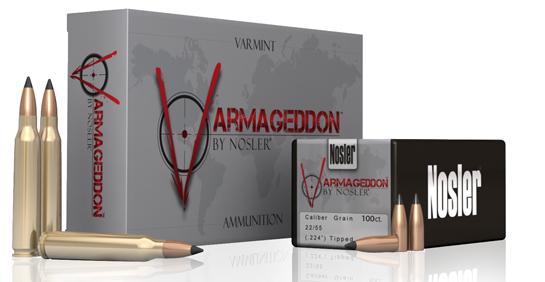

 Want to watch some very cool super-slow-motion videos of projectiles drilling bugholes and blasting through stuff? Then visit
Want to watch some very cool super-slow-motion videos of projectiles drilling bugholes and blasting through stuff? Then visit 

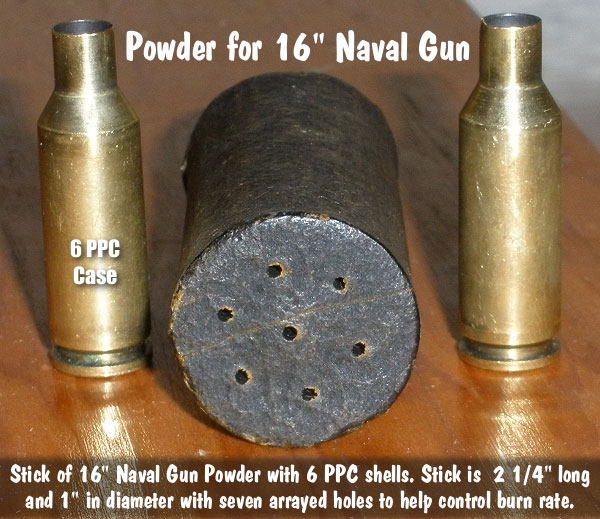
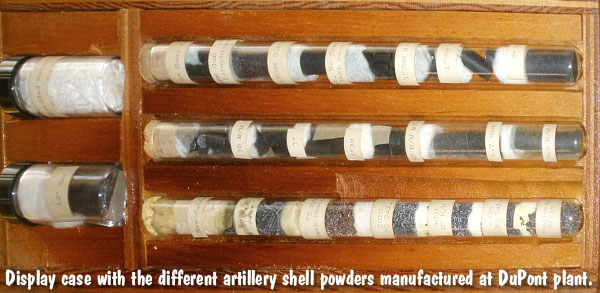
 When you look at a loading manual with load data, you will usually see pressure ratings for stated load. Sometimes these are listed in PSI numbers, which most people correctly understand to be Pounds per Square Inch of pressure. However, powder-makers also commonly list pressure in CUP numbers. CUP stands for Copper Unit of Pressure. You may be asking — “What exactly is a CUP, and what is the origin of that unit of measurement?” You may also be wondering — “What’s the difference between CUP pressures and PSI pressures?” On Hodgdon’s
When you look at a loading manual with load data, you will usually see pressure ratings for stated load. Sometimes these are listed in PSI numbers, which most people correctly understand to be Pounds per Square Inch of pressure. However, powder-makers also commonly list pressure in CUP numbers. CUP stands for Copper Unit of Pressure. You may be asking — “What exactly is a CUP, and what is the origin of that unit of measurement?” You may also be wondering — “What’s the difference between CUP pressures and PSI pressures?” On Hodgdon’s 